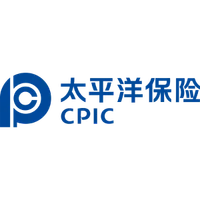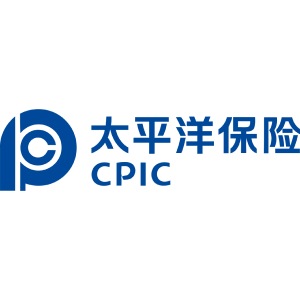
China Pacific Insurance Group Co Ltd
SSE:601601


| US |

|
Johnson & Johnson
NYSE:JNJ
|
Pharmaceuticals
|
| US |

|
Berkshire Hathaway Inc
NYSE:BRK.A
|
Financial Services
|
| US |

|
Bank of America Corp
NYSE:BAC
|
Banking
|
| US |

|
Mastercard Inc
NYSE:MA
|
Technology
|
| US |

|
UnitedHealth Group Inc
NYSE:UNH
|
Health Care
|
| US |

|
Exxon Mobil Corp
NYSE:XOM
|
Energy
|
| US |

|
Pfizer Inc
NYSE:PFE
|
Pharmaceuticals
|
| US |

|
Palantir Technologies Inc
NYSE:PLTR
|
Technology
|
| US |

|
Nike Inc
NYSE:NKE
|
Textiles, Apparel & Luxury Goods
|
| US |

|
Visa Inc
NYSE:V
|
Technology
|
| CN |

|
Alibaba Group Holding Ltd
NYSE:BABA
|
Retail
|
| US |

|
3M Co
NYSE:MMM
|
Industrial Conglomerates
|
| US |

|
JPMorgan Chase & Co
NYSE:JPM
|
Banking
|
| US |

|
Coca-Cola Co
NYSE:KO
|
Beverages
|
| US |

|
Walmart Inc
NYSE:WMT
|
Retail
|
| US |

|
Verizon Communications Inc
NYSE:VZ
|
Telecommunication
|
Utilize notes to systematically review your investment decisions. By reflecting on past outcomes, you can discern effective strategies and identify those that underperformed. This continuous feedback loop enables you to adapt and refine your approach, optimizing for future success.
Each note serves as a learning point, offering insights into your decision-making processes. Over time, you'll accumulate a personalized database of knowledge, enhancing your ability to make informed decisions quickly and effectively.
With a comprehensive record of your investment history at your fingertips, you can compare current opportunities against past experiences. This not only bolsters your confidence but also ensures that each decision is grounded in a well-documented rationale.
Do you really want to delete this note?
This action cannot be undone.

| 52 Week Range |
21.79
40.76
|
| Price Target |
|
We'll email you a reminder when the closing price reaches CNY.
Choose the stock you wish to monitor with a price alert.

|
Johnson & Johnson
NYSE:JNJ
|
US |

|
Berkshire Hathaway Inc
NYSE:BRK.A
|
US |

|
Bank of America Corp
NYSE:BAC
|
US |

|
Mastercard Inc
NYSE:MA
|
US |

|
UnitedHealth Group Inc
NYSE:UNH
|
US |

|
Exxon Mobil Corp
NYSE:XOM
|
US |

|
Pfizer Inc
NYSE:PFE
|
US |

|
Palantir Technologies Inc
NYSE:PLTR
|
US |

|
Nike Inc
NYSE:NKE
|
US |

|
Visa Inc
NYSE:V
|
US |

|
Alibaba Group Holding Ltd
NYSE:BABA
|
CN |

|
3M Co
NYSE:MMM
|
US |

|
JPMorgan Chase & Co
NYSE:JPM
|
US |

|
Coca-Cola Co
NYSE:KO
|
US |

|
Walmart Inc
NYSE:WMT
|
US |

|
Verizon Communications Inc
NYSE:VZ
|
US |
This alert will be permanently deleted.
 China Pacific Insurance Group Co Ltd
China Pacific Insurance Group Co Ltd
China Pacific Insurance Group Co Ltd
Investor Relations
China Pacific Insurance Group Co. Ltd. (CPIC) stands as a stalwart in the bustling streets of Shanghai, one of China's leading providers in the insurance sector, weaving a tapestry of financial security through its comprehensive suite of products. Founded in 1991 during the early days of China's economic reform, CPIC has grown into a diversified conglomerate, navigating the complexities of modern-day risk management. The company primarily operates through its two main segments: life insurance and property and casualty insurance. By serving a diverse clientele ranging from individual consumers to large corporations, CPIC has been instrumental in addressing the myriad of risks facing China’s burgeoning middle class and its industrial titans alike. Its strategy is rooted in the ethos of providing customized insurance solutions tailored to meet specific needs, thus ensuring a stable and predictable stream of premium income.
The company's success is entrenched in its robust network of agents and digital platforms that facilitate the seamless distribution of policies across the vast expanse of China, from the highly urbanized cities to more rural locales. Beyond premiums, CPIC has effectively leveraged investment income as a significant revenue stream, strategically managing a diverse portfolio that includes equities, bonds, and real estate to generate returns. As China's economy evolves, CPIC continues to refine its service offerings, employing advanced technologies like AI for risk assessment and management, thereby enhancing operational efficiency and customer satisfaction. Through these multifaceted strategies, CPIC not only safeguards its financial fortitude but also positions itself as a cornerstone of trust in China’s insurance landscape, providing peace of mind to millions navigating the uncertainties of life and business.

China Pacific Insurance Group Co. Ltd. (CPIC) stands as a stalwart in the bustling streets of Shanghai, one of China's leading providers in the insurance sector, weaving a tapestry of financial security through its comprehensive suite of products. Founded in 1991 during the early days of China's economic reform, CPIC has grown into a diversified conglomerate, navigating the complexities of modern-day risk management. The company primarily operates through its two main segments: life insurance and property and casualty insurance. By serving a diverse clientele ranging from individual consumers to large corporations, CPIC has been instrumental in addressing the myriad of risks facing China’s burgeoning middle class and its industrial titans alike. Its strategy is rooted in the ethos of providing customized insurance solutions tailored to meet specific needs, thus ensuring a stable and predictable stream of premium income.
The company's success is entrenched in its robust network of agents and digital platforms that facilitate the seamless distribution of policies across the vast expanse of China, from the highly urbanized cities to more rural locales. Beyond premiums, CPIC has effectively leveraged investment income as a significant revenue stream, strategically managing a diverse portfolio that includes equities, bonds, and real estate to generate returns. As China's economy evolves, CPIC continues to refine its service offerings, employing advanced technologies like AI for risk assessment and management, thereby enhancing operational efficiency and customer satisfaction. Through these multifaceted strategies, CPIC not only safeguards its financial fortitude but also positions itself as a cornerstone of trust in China’s insurance landscape, providing peace of mind to millions navigating the uncertainties of life and business.
Earnings Calls
Management
Fan Fu serves as the Chairman of China Pacific Insurance Group Co., Ltd., a leading insurance company based in China. He has played a significant role in guiding the strategic direction of the company. Under his leadership, the group has focused on expanding its insurance offerings, enhancing customer service, and adopting technological innovations to improve operational efficiency. His extensive experience in the insurance industry and strong leadership skills have been instrumental in driving the company's growth and maintaining its competitive edge in the market. Fan Fu is recognized for his commitment to corporate governance and sustainable business practices within the organization.





























 You don't have any saved screeners yet
You don't have any saved screeners yet
